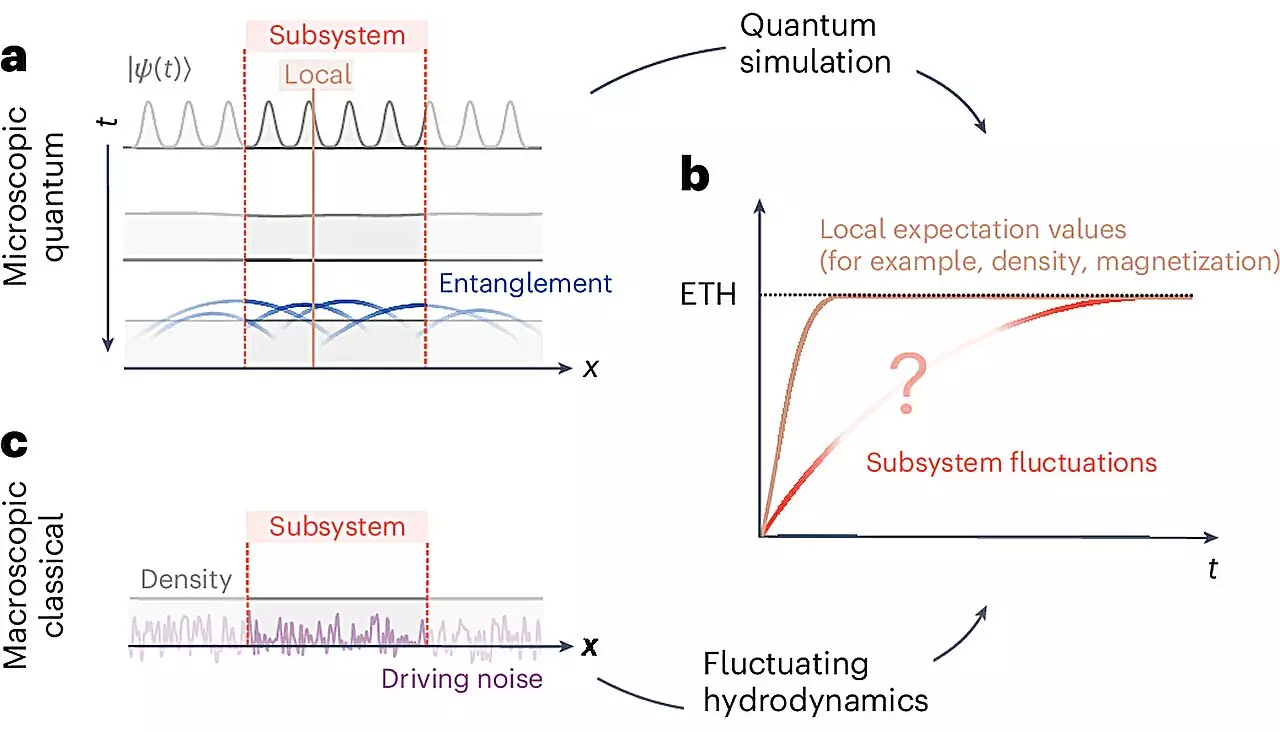The world of quantum physics has always been known for its complexity and chaotic nature. However, recent research led by Professor Monika Aidelsburger and Professor Immanuel Bloch from the LMU Faculty of Physics suggests that even chaotic quantum many-body systems can be described macroscopically through simple diffusion equations with random noise. This study, published in the journal Nature Physics, challenges traditional notions of quantum systems and opens up new possibilities for understanding their behavior.
The research team’s approach is based on the concept of fluctuating hydrodynamics (FHD), which takes into account the random fluctuations observed in the motion of particles in chaotic systems. These fluctuations, known as Brownian motion, are a result of the random collisions of particles with individual molecules. By describing these movements as white noise, FHD theory suggests that the behavior of a system can be determined by a single quantity – the diffusion constant. This simplifies the macroscopic description of chaotic systems and eliminates the need to delve into microscopic interactions.
Challenges in Describing Chaotic Quantum Systems
While FHD theory has shown promise in describing chaotic classical systems, its application to chaotic quantum systems remains an open question. Quantum particles behave fundamentally differently from classical particles due to phenomena such as “uncertainty” and “entanglement.” These characteristics make quantum systems notoriously difficult to calculate and understand. However, the research team believes that an FHD description could offer new insights into the behavior of chaotic quantum systems.
Experimental Approach
To test the applicability of FHD theory to chaotic quantum systems, the team conducted experiments on ultracold cesium atoms in optical lattices. By preparing the quantum system in a non-equilibrium initial state and observing its evolution over time, the researchers were able to measure density fluctuations and correlations. The results indicated that FHD theory accurately described the system both qualitatively and quantitatively, providing valuable insights into the behavior of chaotic quantum systems.
The findings of this study have significant implications for the field of quantum physics. By demonstrating that chaotic quantum systems can be described macroscopically through simple diffusion equations, the research team has opened up new avenues for understanding and predicting the behavior of complex quantum systems. This could lead to breakthroughs in areas such as quantum computing and quantum simulations, where the description of quantum interactions is crucial for developing new technologies.
The study by Professor Aidelsburger, Professor Bloch, and their team sheds light on the macroscopic description of chaotic quantum systems. By applying fluctuating hydrodynamics theory to quantum many-body systems, they have shown that even highly complex and chaotic systems can be simplified and understood through simple diffusion equations. This research paves the way for further exploration of the behavior of quantum systems and has the potential to revolutionize our understanding of the quantum world.


Leave a Reply